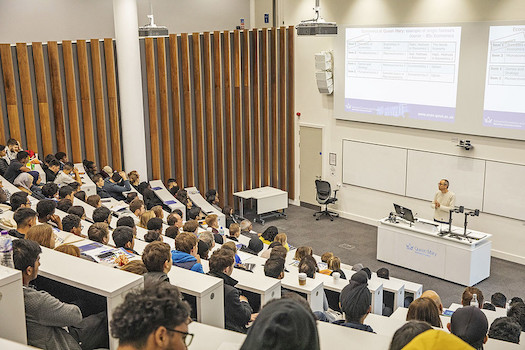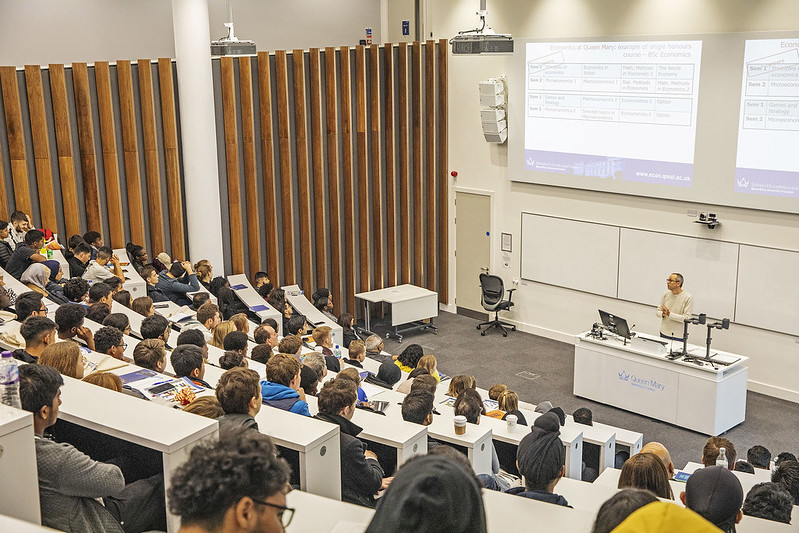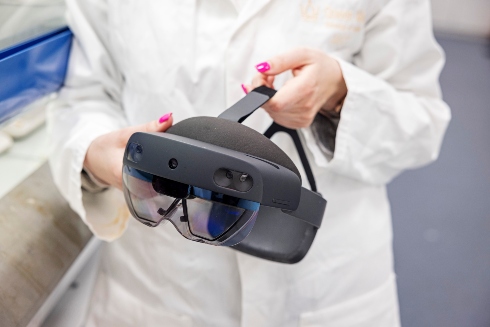Research
At Queen Mary University of London, Educators are at the forefront of research conducted on LEA. As practitioners, they are well-positioned to disseminate findings and good practices to the wider higher education community. The following are examples of educators who have been working actively in this space.
Dr Usman Naeem
Dr Usman Naeem is a Senior Lecturer in the School of Electronic Engineering and Computer Science (EECS) and Queen Mary Academy Fellow, who is leading the learning development pathway of LEA at Queen Mary University of London and has supported various stakeholders to enable pedagogical changes and optimise LEA impact for learners, educators and the Institution. Usman has delivered successful LEA training and has a track record in this area. For example, Embedding LEA into Curriculum Design workshop was launched for the first time on the occasion of the Festival of Education 2023 and has empowered a variety of academics/practitioners to use LEA to improve their teaching outcomes confidently. In addition to this, he has chaired a series of special sessions based on LEA at educational conferences such as the IEEE Global Engineering Education Conference (EDUCON).
Below are some examples of Usman’s LEA-related work:
Learner Engagement Analytics in a Hybrid Learning Environment
Learner Engagement Analytics in a Hybrid Learning Environment
Abstract: Computer Science (CS) programmes in higher education institutions worldwide have seen unprecedented growth in learners, which has presented educators with several challenges. These include teaching large classes while simultaneously measuring learner engagement. CS programmes tend to have large first-year programming classes, as this is a core subject for all learners, which can lead to an environment where learners start to disengage due to feeling anonymous and lacking support. As we enter the post-pandemic era, institutions have started to adopt a hybrid approach to teaching and learning, which paves the way for educators to analyse data from learning management systems and on-campus learning activities (lectures, seminars, labs) to measure learner engagement and identify learners who are struggling and require further support. The work in this paper describes the adaptation of an online pedagogic framework during the hybrid delivery of a first-year web programming module, which includes a hybrid practical lab coordination system to conduct learner engagement analytics to support learners.
Unlocking the Potential of Learner Engagement Analytics in Higher Education
Abstract: Organisations across many sectors use data analytics to gain valuable insights to make effective decisions. Since the COVID-19 pandemic, data analytics has gained momentum in the higher education sector, which has resulted in the field of education research known as Learner Engagement Analytics (LEA). This is based on combining several data sources based on learner engagement, including data extracted from (but not limited to) learning management systems, attendance records, online sessions and library systems. This data can provide institutions, educators and learner support services with insights into the learner’s learning experiences, which in turn help higher education institutions to facilitate a learning environment that enables their learners to reach their full academic potential. LEA can also help in identifying learners who disengage with their courses, which can have an impact on learner retention rates. From an educator’s perspective, insights from LEA can be used by educators to assess the impact of their teaching and inform their pedagogic approach. However, educators can feel overwhelmed when presented with a plethora of engagement data, hence can be unsure how to start utilising LEA for their courses. This session aims to introduce LEA from an educator’s perspective and how it can be used in courses. This session will provide educators with an understanding of the purpose and importance of engagement markers and how they can be used effectively to gain meaningful insights.
Dr Marie-Luce Bourguet
Dr Marie-Luce Bourguet is a Senior Lecturer in the School of Electronic Engineering and Computer Science (EECS), she is director of the EECS Educational Scholarship Centre, and serves as deputy director of the Centre for Academic Inclusion in Science and Engineering. One of her projects involves using learning analytics to measure learners’ self-regulated learning skills in a flipped learning environment. Additionally, she is developing AI algorithms to understand an online learner’s status, like their cognitive-affective state, fatigue, and cognitive load, aiming to identify when a learner might need help.
she is director of the EECS Educational Scholarship Centre, and serves as deputy director of the Centre for Academic Inclusion in Science and Engineering. One of her projects involves using learning analytics to measure learners’ self-regulated learning skills in a flipped learning environment. Additionally, she is developing AI algorithms to understand an online learner’s status, like their cognitive-affective state, fatigue, and cognitive load, aiming to identify when a learner might need help.
You can read some of Marie-Luce’s papers based on LEA below:
Measuring Learners’ Self-regulated Learning Skills from their Digital Traces
Measuring Learners’ Self-regulated Learning Skills from Their Digital Traces and Learning Pathways
Abstract: Flipping the classroom requires from students some self-regulated learning skills, as they must have engaged in learning activities prior to attending classes. The study we describe in this paper was done in the context of a 15-week flipped course delivered online to a large class of undergraduate students. We collected various time-stamped digital traces generated by the students’ engagement in the required weekly learning activities (H5P interactive videos, quizzes and worksheets). The collected data allowed the generation of visual learning pathways, from which several types of learning profiles emerged. A distance measure between the students’ learning pathways and the instructor’s recommended pathway was found to be negatively correlated with exam performance. The results from a survey collecting students’ perceptions of their engagement with the learning activities are also presented.
Data-driven Behavioural and Affective Nudging of Online Learners
Data-driven Behavioural and Affective Nudging of Online Learners: System Architecture and Design
Abstract: In this work-in-progress paper, we describe the architecture of a system that can automatically sense an online learner’s situation and context (affective-cognitive state, fatigue, cognitive load, and physical environment), analyse the needs for intervention, and react through an intelligent agent to shape the learner’s self-regulated learning strategies. The paper describes the system concept and its software architecture and design: what sensory data are captured and how they are processed, analysed, and integrated; what intervention decision will follow; and what behavioural and affective nudges will be given.



